Kansas and Civil War arrive together in U.S.
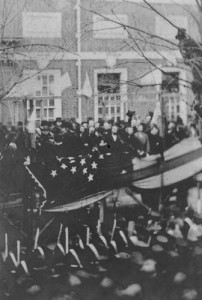
One hundred and fifty-five years ago, the U.S. got a new state – and a state of war. The state was Kansas, which celebrated its addition to the Union in 1861 with expressions of loyalty to the American flag and preparations to become a battleground of the North vs. the South.
An iconic moment of that Kansas history occurred miles to the east – in Philadelphia. As Abraham Lincoln, the newly elected president, was traveling from his home in Illinois to Washington, D.C. Flag, for his inauguration, he stopped along the route to try to cement loyalty and stave off the coming Civil War Flags.
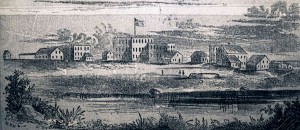
One of those stops was in the City of Brotherly Love, and it came on an iconic day: Washington’s birthday. Lincoln’s gesture toward national unity was to raise the new 34-star American flag to recognize the admission of Kansas on Jan. 29.
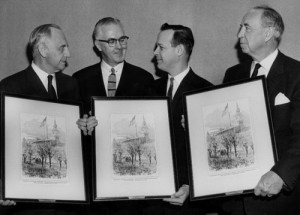
“Each additional star added to that flag has given additional prosperity and happiness to this country,” Lincoln told a crowd at Independence Hall. “I think we may promise ourselves that not only the new star placed upon that flag shall be permitted to remain there to our permanent prosperity for years to come, but additional ones shall from time to time be placed there.”
Warning that “anarchy stalks the land,” a newspaper in Atchison, Kansas, remarked on “all the fruits that flow from a well-knit Union.” It also told readers about a man who came to town, and “took off his hat and carried it in his hands until he passed” a building displaying the Stars and Stripes. He “considered it impolite to pass without taking off his hat.”
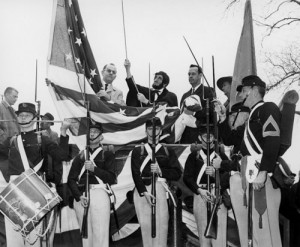
Another newspaper, this one in Leavenworth, printed an image of the star-spangled banner above a poem that read in part: “Invincible Banner! The Flag of the Free!/O, where trods the foot that would falter for thee?”
Later in 1861, the Atchison journal informed readers that, on the Fourth of July Flags, President Lincoln, his Cabinet and other officials had watched “a grand and brilliant spectacle sufficient to strike terror into the hearts of all secessionists.” They were viewing 20,000 volunteers from New York State. When the parade ended, “a large and beautiful American flag was raised by the President amidst the deafening cheers of the crowd.”
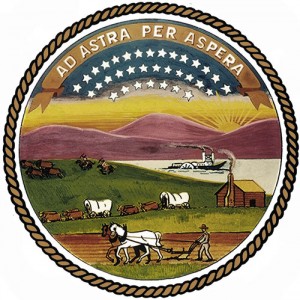
Kansans focused so much of their attention on the national banner for a simple reason: Their state didn’t have its own flag when it entered the Union. In fact, the Kansas state flag wasn’t officially designated for more than 60 years, although the basic idea was used unofficially.
In 1927, Kansas finally adopted a state flag: a blue banner on which appeared both the state seal and crest. It’s wasn’t an immediate success, according to the Associated Press, which said, “Kansas citizens apparently have no desire to [display] their state flag….Only one such emblem is known to exist,” and it belonged to the governor.
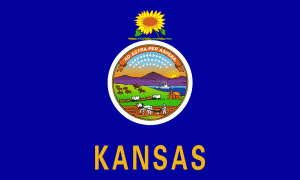
The crest is a sunflower, while the state seal, which had been approved in 1861, consists of many elements, much of it reflective of Kansas’ agriculture. The flag also carries a motto: “Ad astra per aspera.” It means “through hardships to the stars.” In 1961, its centennial of statehood, the word “Kansas” was added to the design for good measure.
